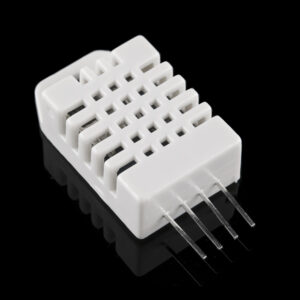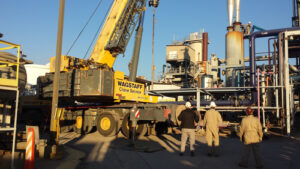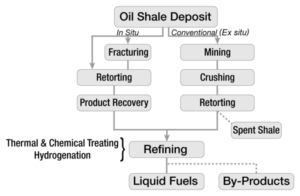 The fiber Bragg grating distributed temperature sensing on gas-insulated line spacer influences surfaces charge accumulation. Nevertheless, it is very difficult to perform the DTS measurement because the traditional electric sensors have huge dimensions, they are difficult to multiplex and highly sensitive to electromagnetic interference.
The fiber Bragg grating distributed temperature sensing on gas-insulated line spacer influences surfaces charge accumulation. Nevertheless, it is very difficult to perform the DTS measurement because the traditional electric sensors have huge dimensions, they are difficult to multiplex and highly sensitive to electromagnetic interference.
Thus, a distributed temperature sensing system of the GIL spacer based on the technology of the optical frequency domain reflectometry was designed to solve the challenges. The operation of the DTS system is based on the ultra-weak fiber Bragg grating or FBG technology to change single-mode optical fiber because of its higher signal-noise ratio.
It should be noted that the distributed temperature sensing also used the demodulation technique to compensate for the nonlinear frequency tuning errors caused by the unstable tunable laser. Therefore, the DTS system allows determining the connection between the space temperature and the wavelength shift during the calibration test.
Additionally, the distributed temperature sensing includes the application of the data processing technique for 3D surface temperature on a cone-type spacer. Finally, the DTS system based on FBG technology enables to obtain efficiently high-resolution temperature measurements on the spacer surface with the help of the optical frequency domain reflectometry, which is virtually impossible to perform with the traditional electric temperature sensing systems.
Nowadays the technology of direct current transmission with the gas-insulated line is an effective way due to its low electrical losses compared with, for example, AC transmission. That is why the distributed temperature sensing is considered to be a key factor that should be known first.
To be more precise, the disadvantages of traditional electric sensing systems such as dimensions, multiplexing, and sensitivity to EMI are solved by optical fiber sensing in electrical engineering. Fiber Bragg grating technology is a precise optical temperature sensing technique widely applied. But there are some limits in the multiplexing ability of conventional FBG sensors.
The new distributed temperature sensing system includes ultra-weak fiber Bragg gratings providing a reflectivity of only 0.1% compared to the conventional FBG sensors. Compared to the optical frequency domain reflectometry based on the Rayleigh technology, “ultra-weak FBG can achieve higher signal-noise ratio since the reflection of ultra-weak FBG sensor is much higher than the backscattering in the optical fiber”.
Optromix is a manufacturer of innovative fiber optic products for the global market. The company provides the most technologically advanced fiber optic solutions for the clients. Optromix produces a wide range of fiber optic devices, including cutting-edge customized fiber optic Bragg grating product line and fiber Bragg grating sensor systems. Moreover, Optromix is a top choice among the manufacturers of fiber Bragg grating monitoring systems. If you have any questions, please contact us at info@optromix.com


 Traditional in situ observations of meteorological variables are limited by surface levels, herein, it is possible to carry out the lowest observation around just 1-m height. Therefore, observation results of both shallow fog, and the initial growth stage of thicker fog layers can be missed in this case. Nevertheless, the use of
Traditional in situ observations of meteorological variables are limited by surface levels, herein, it is possible to carry out the lowest observation around just 1-m height. Therefore, observation results of both shallow fog, and the initial growth stage of thicker fog layers can be missed in this case. Nevertheless, the use of According to a recent study, the
According to a recent study, the  Today operators in highly fractured carbonate reservoirs use running wireline gradiometric surveys as a traditional way of oil-rim movement monitoring. Nevertheless, the method is not ideal because it does not allow providing the necessary information in a manner timely enough to influence operations since the surveys are conducted just a few times a year.
Today operators in highly fractured carbonate reservoirs use running wireline gradiometric surveys as a traditional way of oil-rim movement monitoring. Nevertheless, the method is not ideal because it does not allow providing the necessary information in a manner timely enough to influence operations since the surveys are conducted just a few times a year.  The traditional methods of oil extraction become less and less productive despite growing human needs. Today the main challenge of the oil industry is the development of a new way for oil recovering from unconventional sources. The solution is the extraction of oil or kerogen shales that allow diminishing oil prices.
The traditional methods of oil extraction become less and less productive despite growing human needs. Today the main challenge of the oil industry is the development of a new way for oil recovering from unconventional sources. The solution is the extraction of oil or kerogen shales that allow diminishing oil prices.  Distributed sensing technology includes
Distributed sensing technology includes  One of the most promising directions in the development of systems for controlling of temperature of high-voltage power lines, fire alarm systems, oil and gas fields, and others are
One of the most promising directions in the development of systems for controlling of temperature of high-voltage power lines, fire alarm systems, oil and gas fields, and others are  Recent events in the nuclear industry have shown the weaknesses in the control of the critical systems that ensure the safety of the nuclear plant. The extreme and accidental conditions, such as high temperatures and high levels of radiation sabotage the security of nuclear power plants, leading to major disasters. The main issue for the nuclear industry is to enhance the security of existing nuclear power plants and improve the design of the future ones. In the case of emergency or accidental conditions in nuclear reactors the following thermodynamic parameters need to be known in order to facilitate appropriate actions: temperature, pressure, water level, radiation level. The accuracy of the obtained information directly influences the decisions made by the operators. The monitoring instruments used inside the nuclear fuel pools need to better withstand severe conditions that occur during malfunctions and accidents, namely high temperatures and high levels of radiation. The strict safety regulations have pushed the fiber optic market to develop sensors based on optical fibers. Optical fiber sensors, like
Recent events in the nuclear industry have shown the weaknesses in the control of the critical systems that ensure the safety of the nuclear plant. The extreme and accidental conditions, such as high temperatures and high levels of radiation sabotage the security of nuclear power plants, leading to major disasters. The main issue for the nuclear industry is to enhance the security of existing nuclear power plants and improve the design of the future ones. In the case of emergency or accidental conditions in nuclear reactors the following thermodynamic parameters need to be known in order to facilitate appropriate actions: temperature, pressure, water level, radiation level. The accuracy of the obtained information directly influences the decisions made by the operators. The monitoring instruments used inside the nuclear fuel pools need to better withstand severe conditions that occur during malfunctions and accidents, namely high temperatures and high levels of radiation. The strict safety regulations have pushed the fiber optic market to develop sensors based on optical fibers. Optical fiber sensors, like  Traditionally, geothermal plants have been located in areas where hot springs and other indicators of thermal activity can be seen at the surface. However, enhanced geothermal systems (EGS) may also be used in areas where hot rock is found at reasonable depths. To achieve geothermal energy, fluid is injected into the drilled wells, heated by contact with the hot rock, and removed to power turbines at the surface. The majority of EGS utilize steam turbines to convert geothermal energy into electricity.
Traditionally, geothermal plants have been located in areas where hot springs and other indicators of thermal activity can be seen at the surface. However, enhanced geothermal systems (EGS) may also be used in areas where hot rock is found at reasonable depths. To achieve geothermal energy, fluid is injected into the drilled wells, heated by contact with the hot rock, and removed to power turbines at the surface. The majority of EGS utilize steam turbines to convert geothermal energy into electricity.